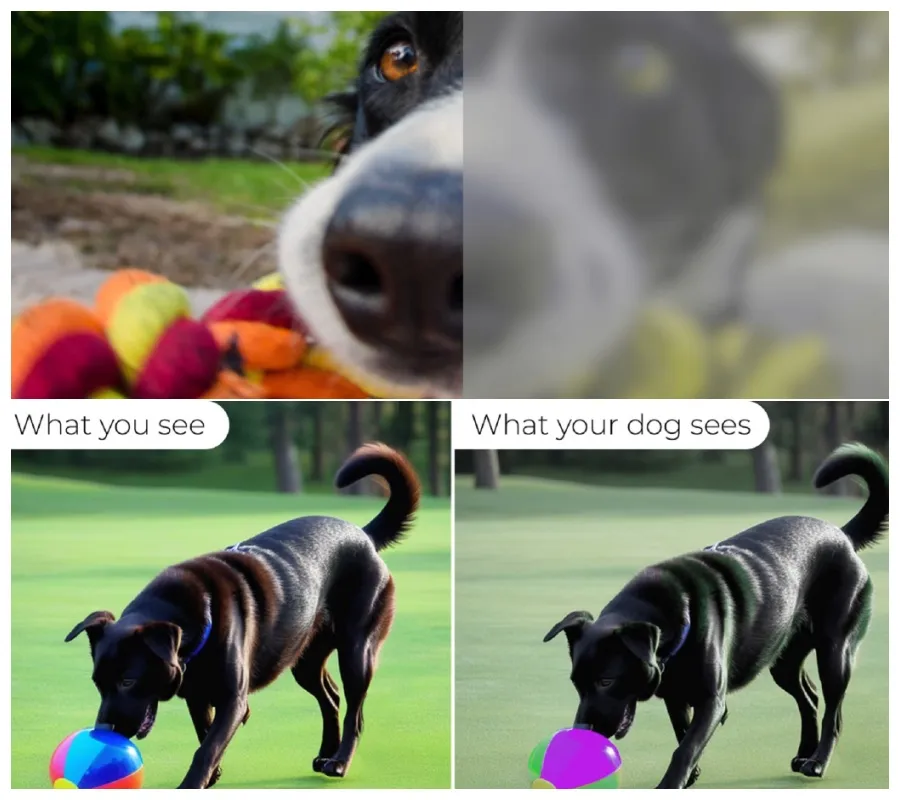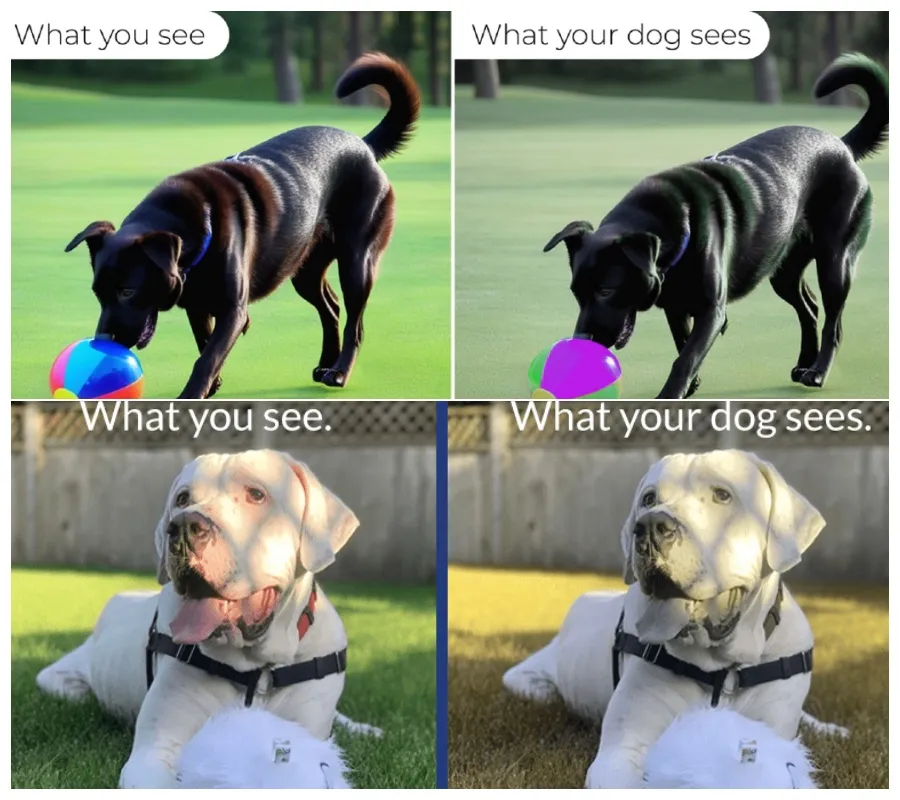
When you take your dog for a walk, you might marvel at the vibrant colors of the world around you—the green grass, blue sky, and colorful flowers. But have you ever wondered what your dog sees? For a long time, it was believed that dogs could only see in black and white. However, recent research has shed light on the true nature of a dog’s vision, revealing that their view of the world is more colorful than we once thought.

Table of Contents
ToggleHow Human Vision Works
To understand how dogs see the world, it’s helpful to first look at how human vision works. The human eye contains specialized cells called “cones” that detect color. Humans have three types of cones, each sensitive to different wavelengths of light: red, green, and blue. The brain combines the input from these cones to produce the full spectrum of colors we see, allowing us to perceive and enjoy the wide variety of colors in our environment.
How Dogs See Colors
Dogs, however, have a different set of cones in their eyes. According to VCA Animal Hospitals, dogs have only two types of cones: blue-sensing and yellow-sensing. This limited range means that dogs experience a type of color blindness known as “dichromatic vision.” In simple terms, dogs can see shades of blue and yellow but lack the ability to see reds and greens as humans do. This is similar to the way humans with red-green color blindness perceive the world.
Research conducted by Jay Neitz, a professor of ophthalmology and color vision expert at the University of Washington, found that without red-sensing cones, dogs cannot distinguish between red and green. For example, a red object might appear brownish or grayish to a dog, while green might be seen as a shade of yellow. This means that your dog’s favorite red ball could look brown, and that bright green chew toy might appear yellowish.
Beyond Colors: Other Vision Differences
Color vision is not the only difference between how humans and dogs see the world. Dogs are generally more near-sighted than humans. If you and your dog are looking at a distant object, it will appear blurrier to your dog. Additionally, dogs have a wider field of peripheral vision, which helps them detect movement from the sides more effectively. However, this comes at a cost: their depth perception is not as sharp, and they see objects more flatly compared to humans.
Another aspect to consider is brightness. Dogs are less sensitive to changes in brightness, meaning they do not perceive contrasts and shades as vividly as we do. What might appear as a clear and distinct shade to us may look more muted and less defined to a dog. This is due to the structure of their eyes, which are designed more for seeing in low light conditions. In fact, dogs have a higher number of rods—cells responsible for vision in low light—in their retinas, which helps them see better at dusk and dawn but sacrifices some color perception and clarity.

Understanding Your Dog’s Vision
Understanding how dogs see can help you better interact with your furry friend. For example, when choosing toys or training tools, selecting colors that dogs can see better, like blue and yellow, may make these items more appealing and easier for them to identify. It can also give insight into their behavior and why they might not respond as expected to certain visual cues, especially those involving red or green colors.
While dogs do not see the world in the same colorful way that humans do, their vision is uniquely suited to their needs. They see a limited range of colors, primarily in blue and yellow, and have excellent low-light vision. By understanding the differences in how dogs perceive their environment, we can better cater to their needs and enhance our bond with them. So, the next time you’re out enjoying the vibrant world, remember that your dog is experiencing it in their special way, and that’s part of what makes them so unique.






